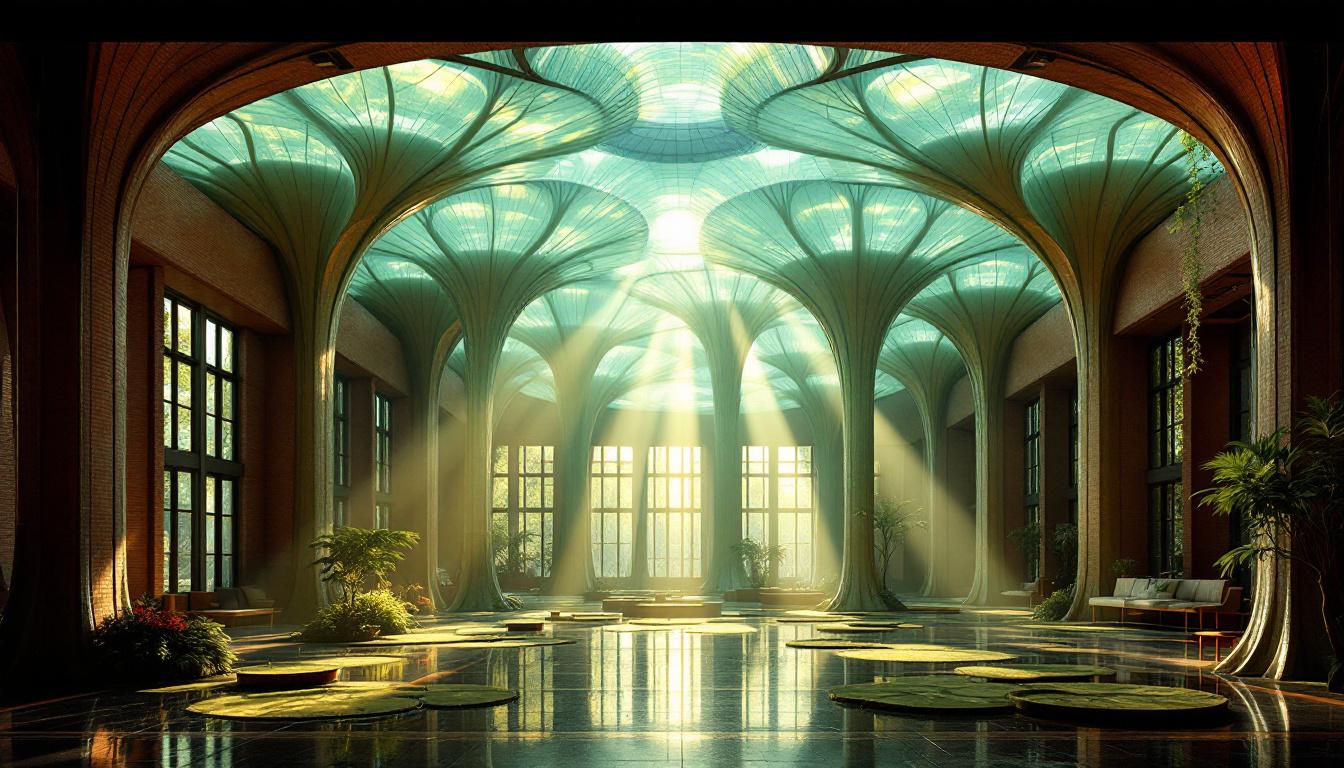Frank Lloyd Wright’s masterpiece in Wisconsin sits largely hidden from mainstream tourism, yet architecture enthusiasts make pilgrimages to this landmark for good reason. The Johnson Wax Headquarters in Racine stands as one of America’s most revolutionary corporate buildings – a testament to Wright’s genius that continues to inspire nearly a century after its creation.
A corporate cathedral that changed American architecture
Completed in 1939, this architectural marvel broke every convention of office design. The Administration Building’s Great Workroom features 43 miles of Pyrex glass tubing that filter natural light through the ceiling, creating an ethereal underwater glow across the 31,000 square foot space. The effect transforms mundane office work into something almost spiritual.
“Wright’s design philosophy here was revolutionary – he believed beautiful workspaces would inspire employees and elevate their daily experience,” explains architectural historian Margaret Thompson. “The Johnson family gave him unprecedented freedom to reinvent what a corporate headquarters could be.”
Lily pad columns that defied engineering logic
The building’s most distinctive features are its dendriform (tree-shaped) columns – nine inches wide at the base before expanding to 18.5-foot “lily pads” that support the roof. When Wright proposed these columns, engineers insisted they couldn’t support the necessary weight. Wright proved them wrong by load-testing a single column with 60 tons – three times the required capacity.
The warm “Cherokee red” brick exterior gives way to these soaring interior columns, creating a workspace that feels more like a natural forest than an office. This organic approach to architecture parallels what you might find in more exotic island destinations, yet exists right in America’s Midwest.
The surprising Research Tower that still inspires innovation
Adjacent to the main building stands the 15-story Research Tower, completed in 1950. This slender structure appears to defy gravity with alternating circular and square floors supported by a central core – like a massive tree trunk. For decades, the building was closed to the public but reopened for tours in 2014.
In these laboratories, researchers developed iconic American products like Raid, Glade, and Pledge. The innovative workspace design reflects a philosophy similar to carefully preserved historic sites – environments that foster creativity through thoughtful design.
A hidden gem accessible through free guided tours
Unlike many architectural landmarks that charge premium admission, SC Johnson offers completely free guided tours of this American treasure. Tours must be reserved in advance and take visitors through both Wright-designed buildings plus the newer Foster + Partners-designed Fortaleza Hall.
“Most visitors are shocked this experience costs nothing,” says tour guide Daniel Ramirez. “We believe sharing this architectural heritage with the public honors Wright’s vision of democratic spaces.”
The company maintains the buildings in pristine condition, making it one of the best-preserved Wright structures in America – far more authentic than many over-visited natural attractions.
Extending your architectural pilgrimage
Architecture enthusiasts should pair their Johnson Wax visit with nearby Wingspread, Wright’s 14,000-square-foot Prairie-style home also built for the Johnson family. This sprawling residence features a dramatic central chimney with four fireplaces and expansive windows that blur indoor and outdoor spaces – creating visual harmony similar to island destinations where nature and habitation blend seamlessly.
Both sites offer an immersive Wright experience at a fraction of the cost and crowds of his more famous Fallingwater or Guggenheim Museum. For the architecture lover seeking hidden gems, Racine delivers a profound experience that rivals Europe’s most celebrated design destinations.
When standing in the Great Workroom, bathed in that distinctive filtered light with columns soaring above, you’ll understand why Wright’s vision remains so powerful. This hidden Wisconsin masterpiece doesn’t just preserve architectural history – it continues to demonstrate how thoughtful design can elevate the human experience.
